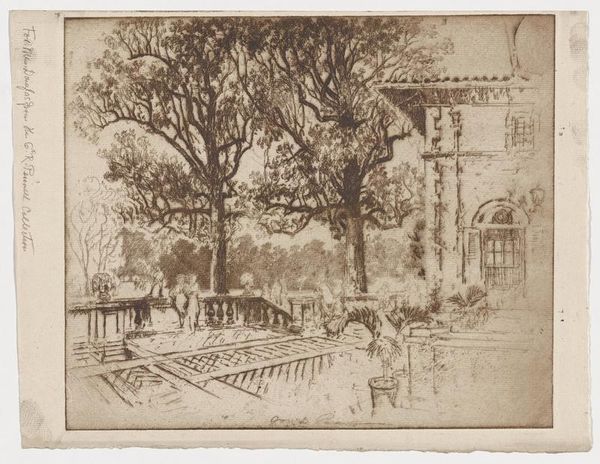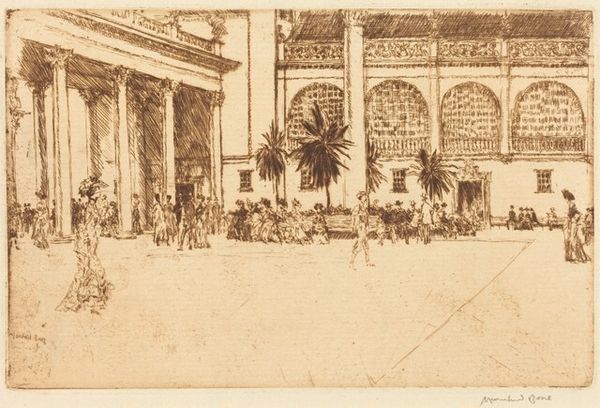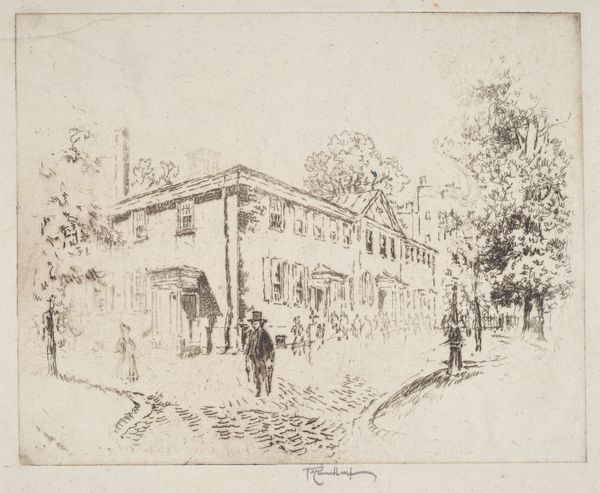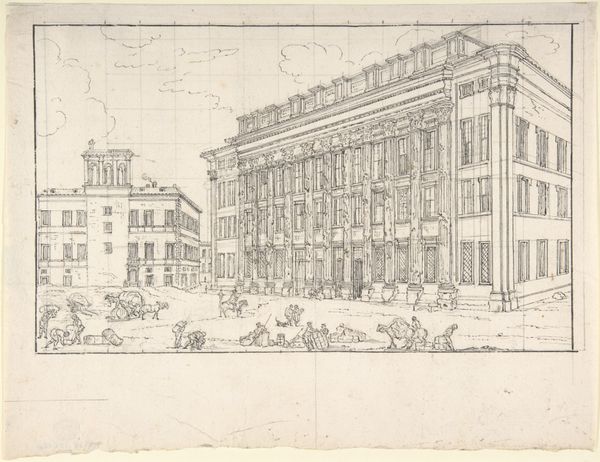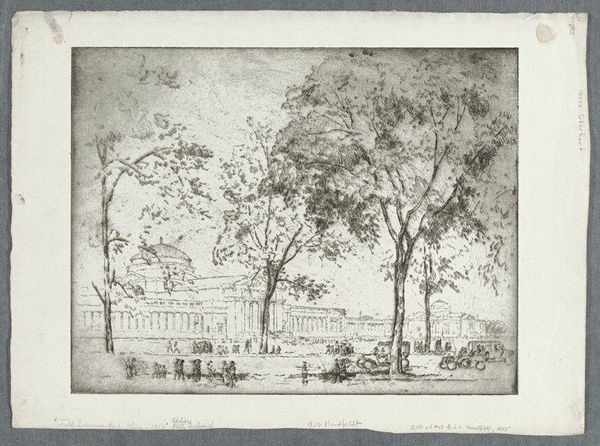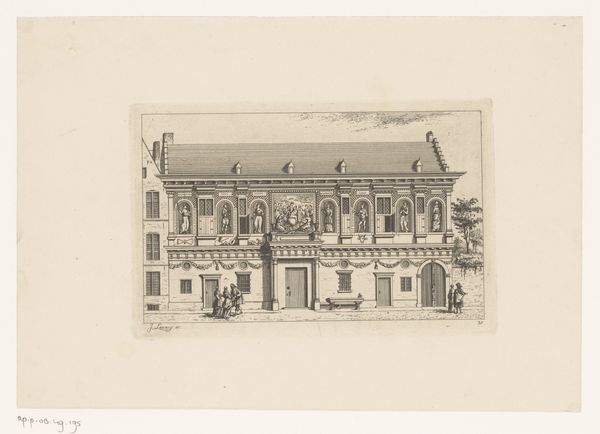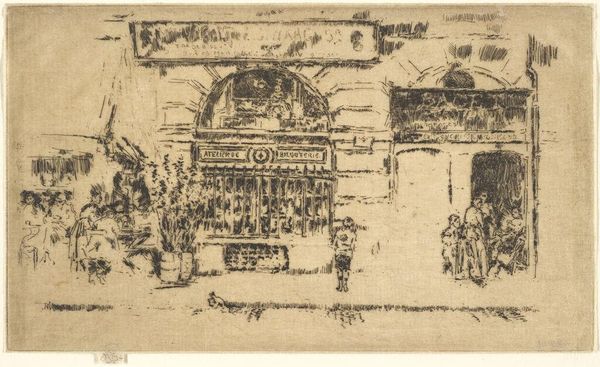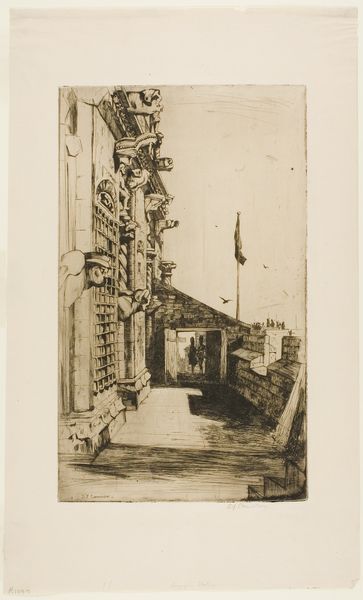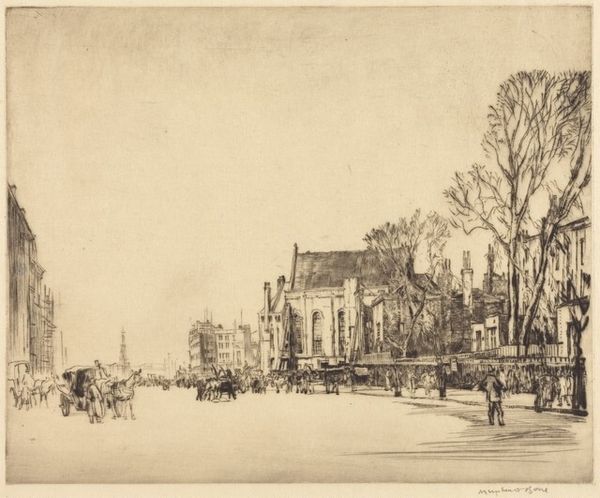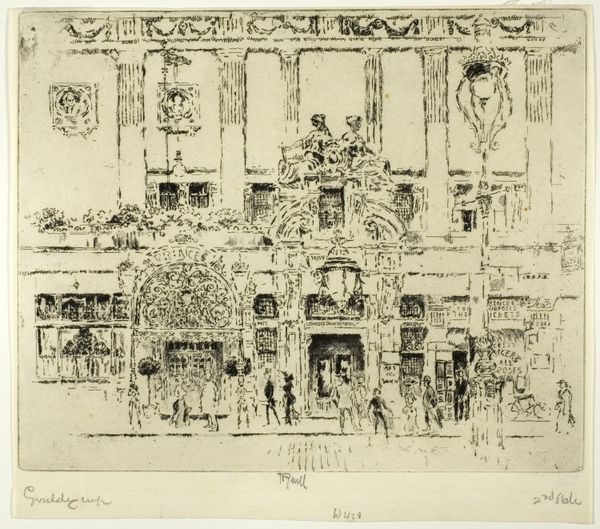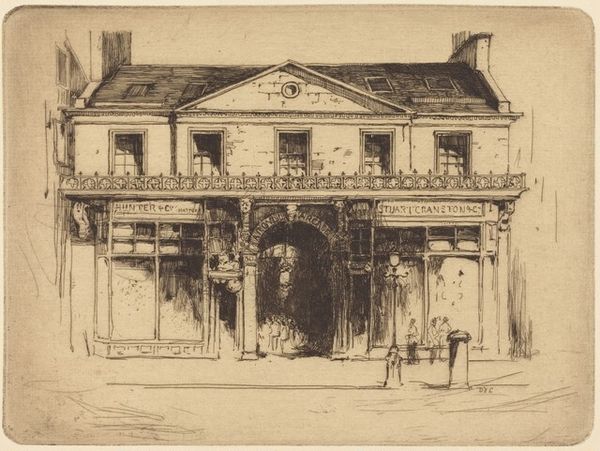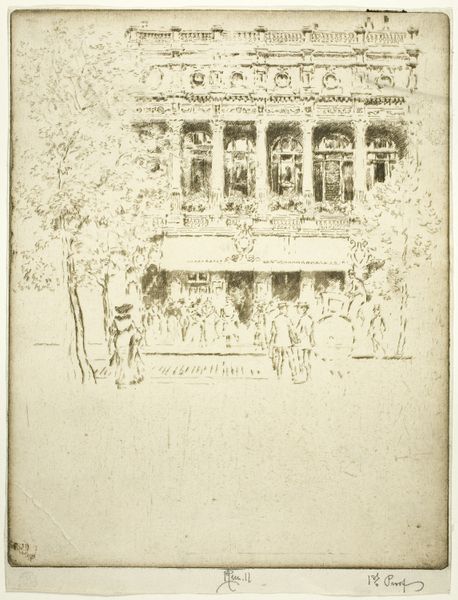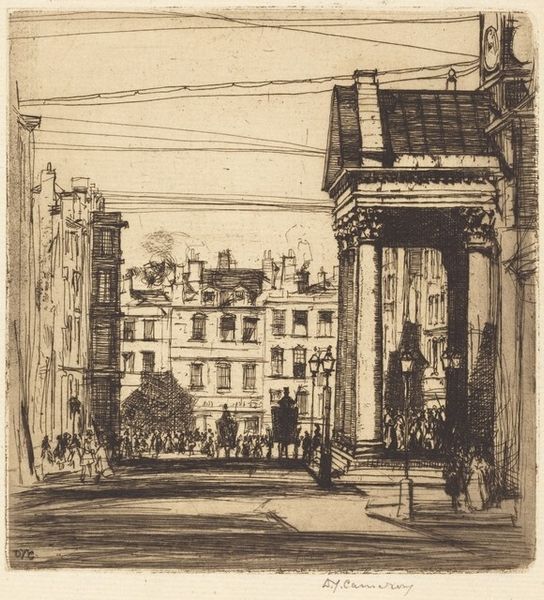
Dimensions: plate: 20 × 29.85 cm (7 7/8 × 11 3/4 in.) sheet: 27.94 × 36.2 cm (11 × 14 1/4 in.)
Copyright: National Gallery of Art: CC0 1.0
Curator: Let’s turn our attention to Lester George Hornby’s 1909 etching, “Dans le Jardin du Palais Royal." Editor: My first thought is how ephemeral it feels, despite depicting solid architecture. The textures seem almost breezy, like a snapshot capturing a fleeting moment. Curator: I see what you mean. And when we situate this image, etched with ink on paper, within the broader sociopolitical landscape of early 20th century Paris, it serves as an intimate window into the everyday lives of the bourgeois. What narrative do you think the artwork suggests about its relationship to the society of its time? Editor: Well, the visible marks of the etching process themselves tell a story about labor and production, how Hornby himself had to translate that vibrant, fleeting moment through craft. It also gives the artwork an immediacy and allows for relatively inexpensive reproducibility and distribution. Curator: Exactly. The fact that it's a print means it could reach a wider audience, further embedding these scenes of bourgeois leisure into the visual culture of the time, particularly amidst rising social tensions. The composition—with its clear depiction of class—places women in the foreground; they occupy spaces of relaxation. It mirrors contemporary discussions about women's visibility in urban life. Editor: I also find it interesting to think about what *isn't* represented. There is this very composed scene, but how many unseen workers were required for the women in the park to have access to leisurely moments? The material process reminds us that there's a social underpinning that is both present and yet concealed. Curator: Yes, thinking intersectionally, it really prompts a reflection on how representations of leisure, particularly in art, are inherently tied to issues of class, labor, and access. How can we unpack those connections today? Editor: I'll look at this artwork differently now, no longer only at the scene, but rather considering all of the visible and invisible components needed for the final print. Curator: Indeed, I’m walking away reflecting upon not just what's shown, but who is allowed the space of representation itself, and within what power structures such representations exist.
Comments
No comments
Be the first to comment and join the conversation on the ultimate creative platform.

